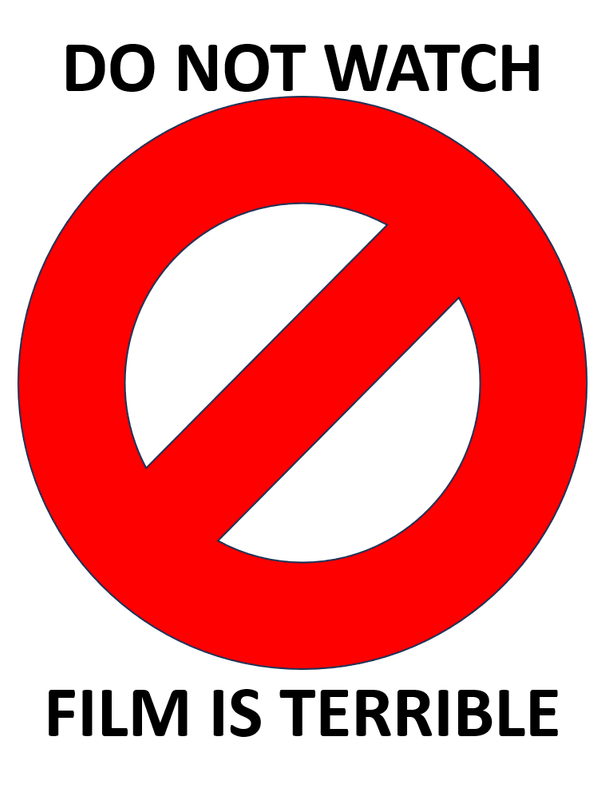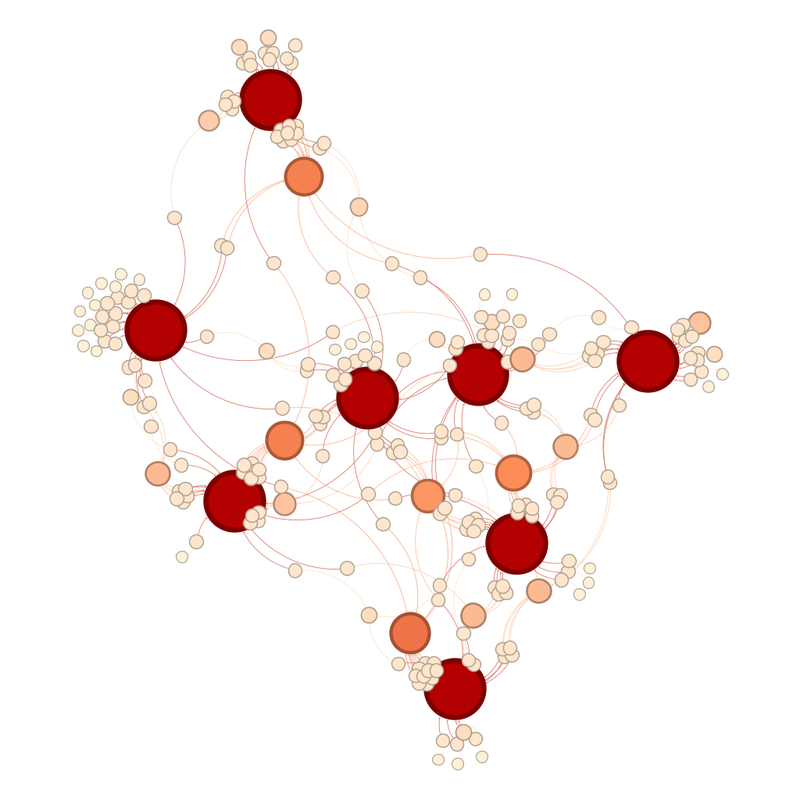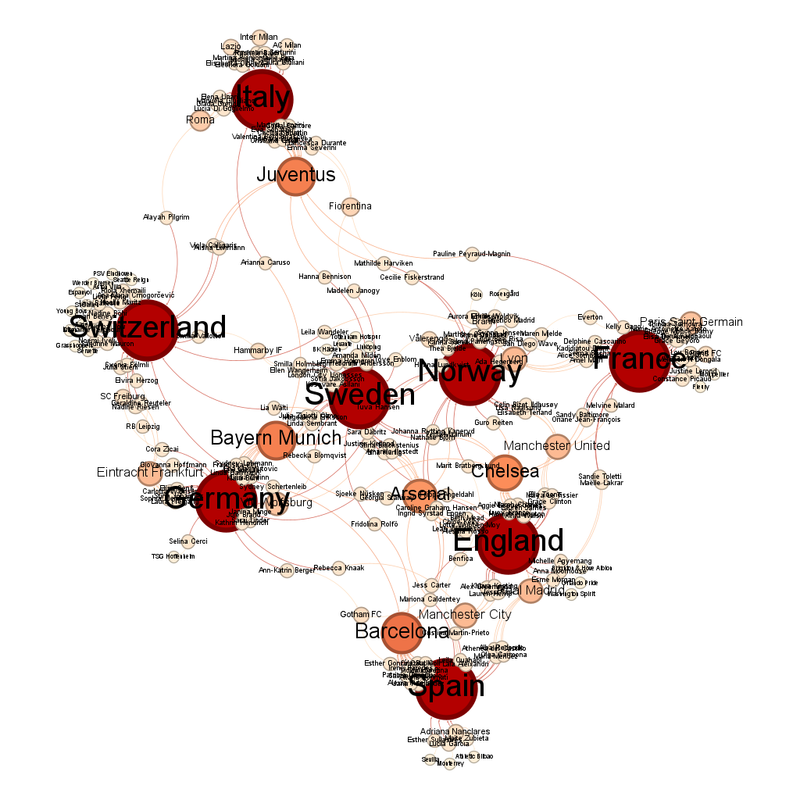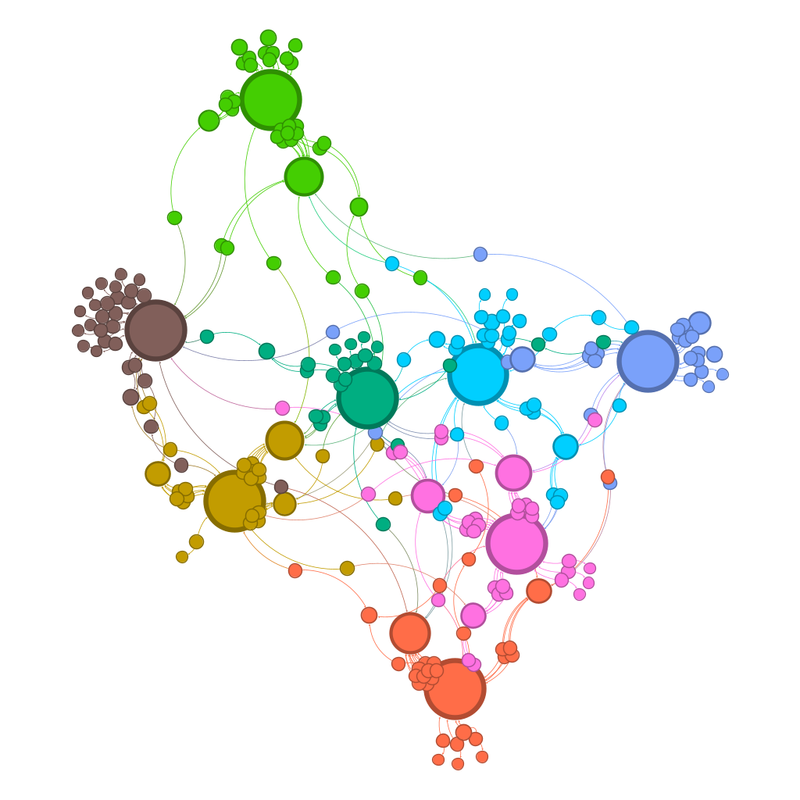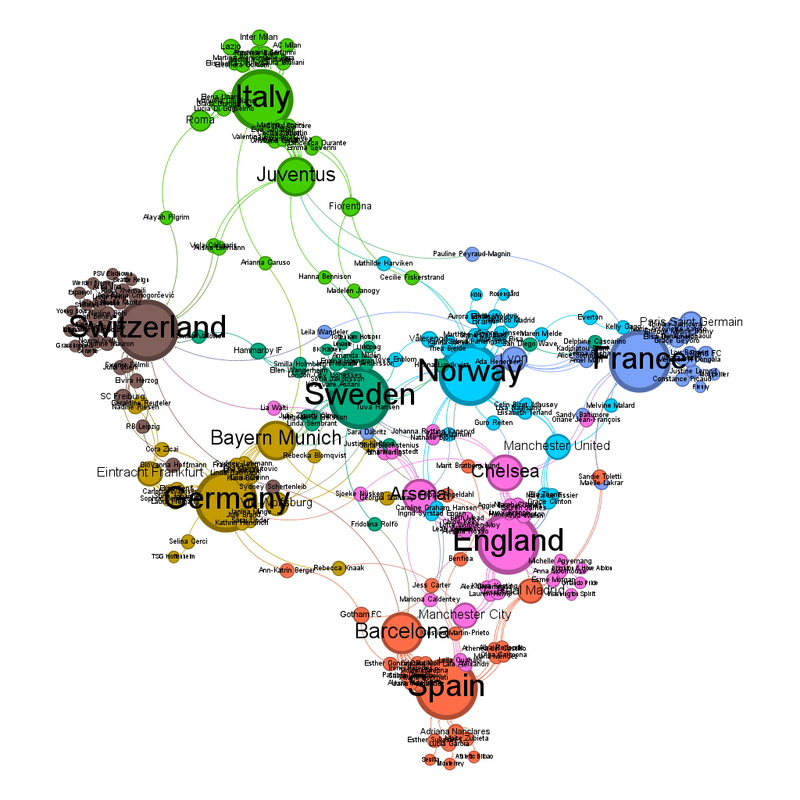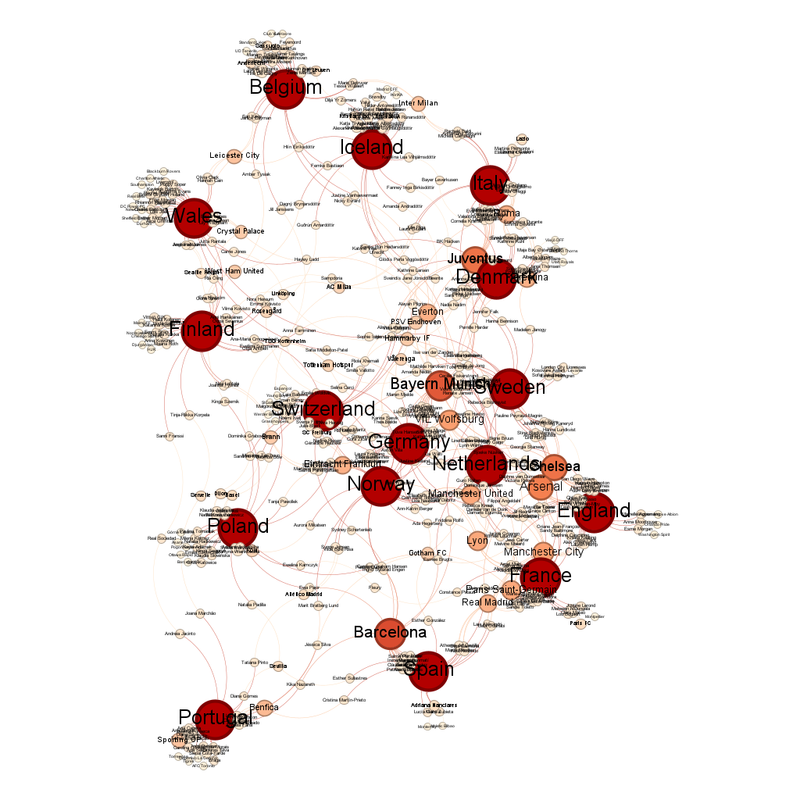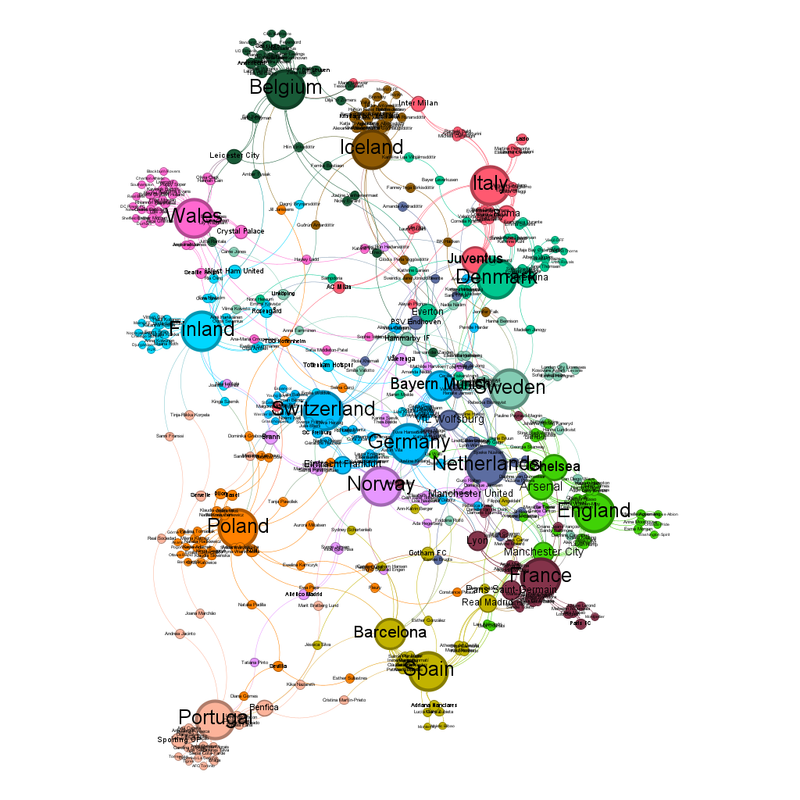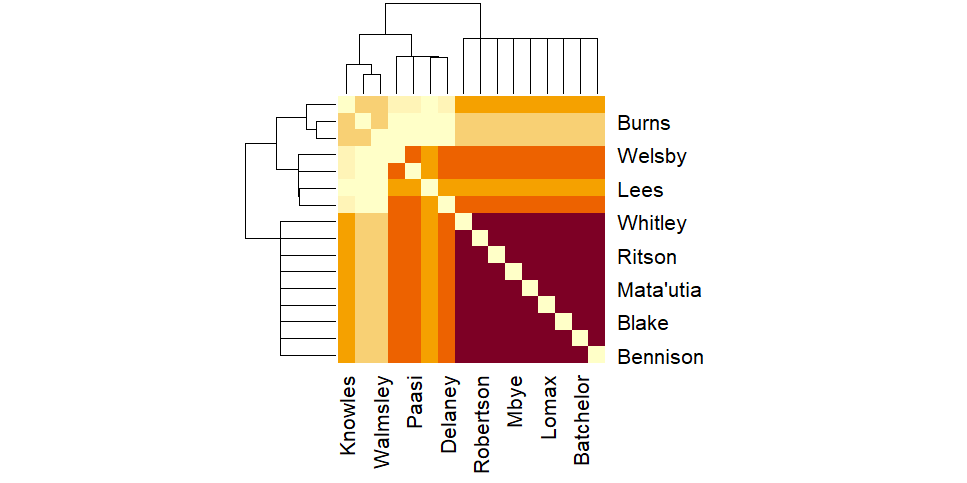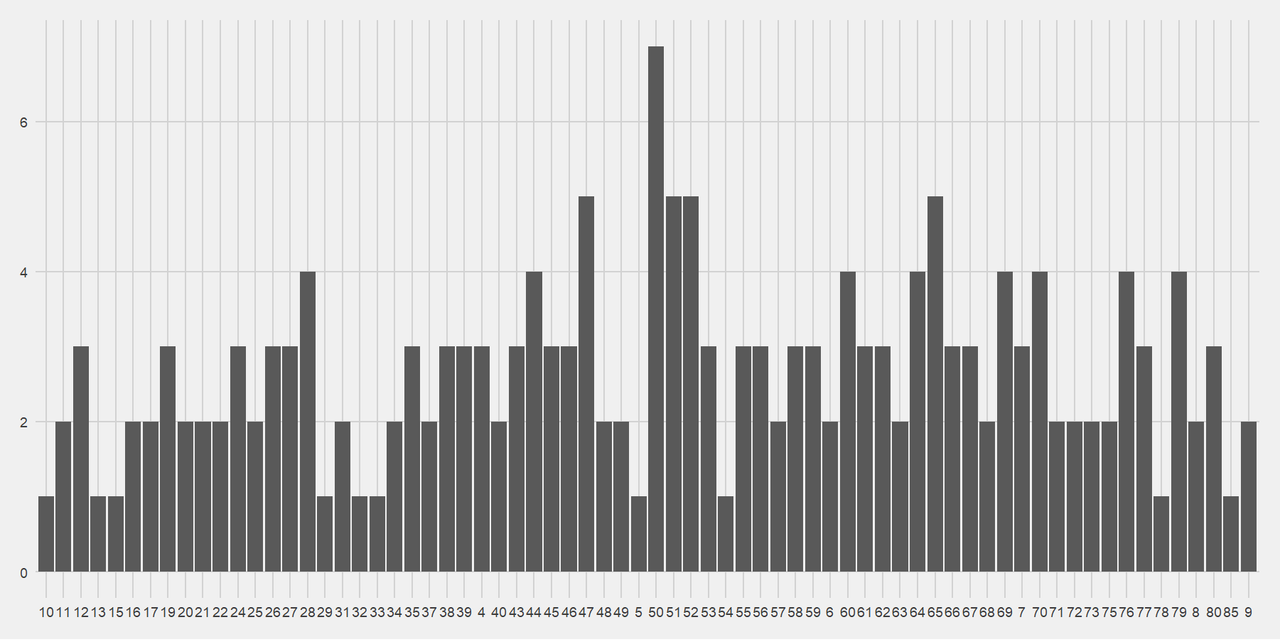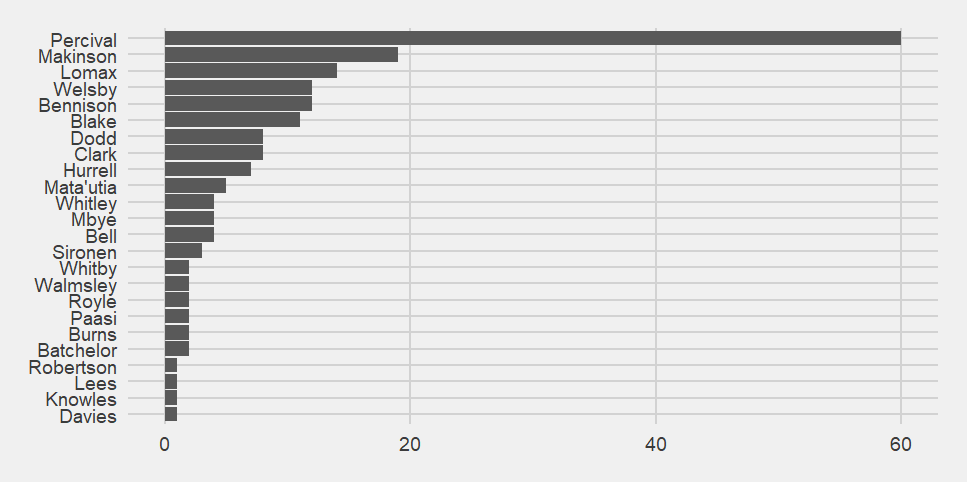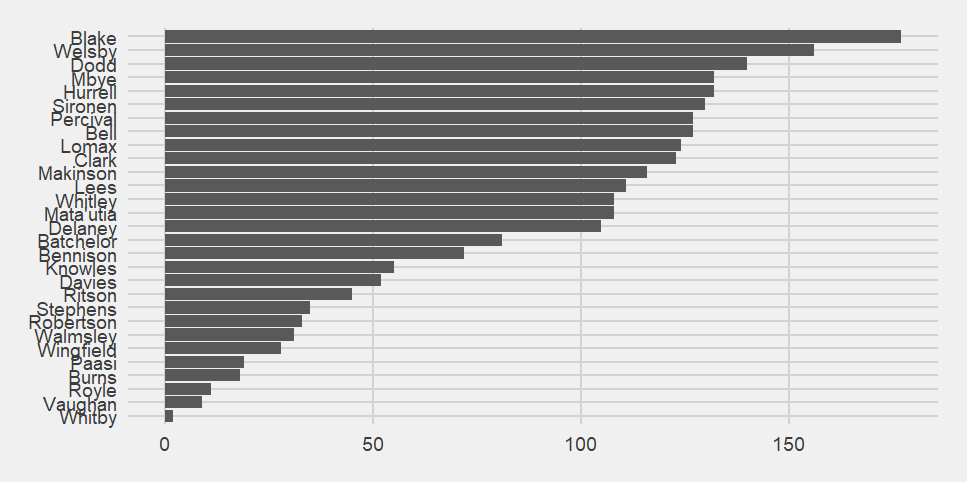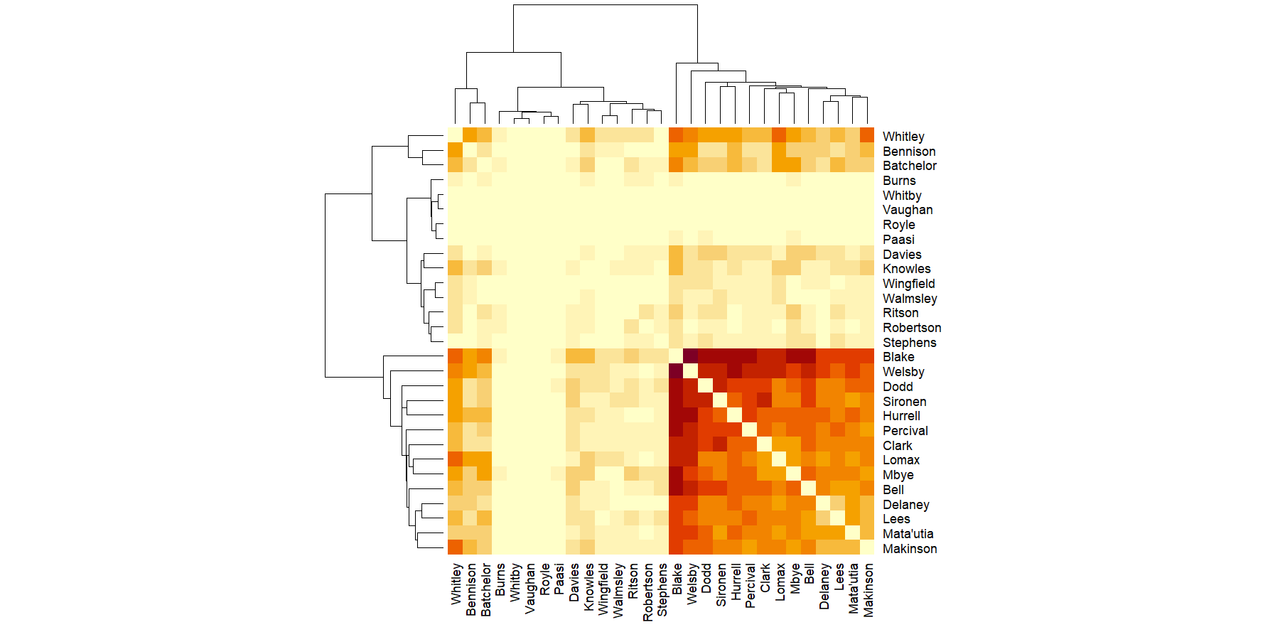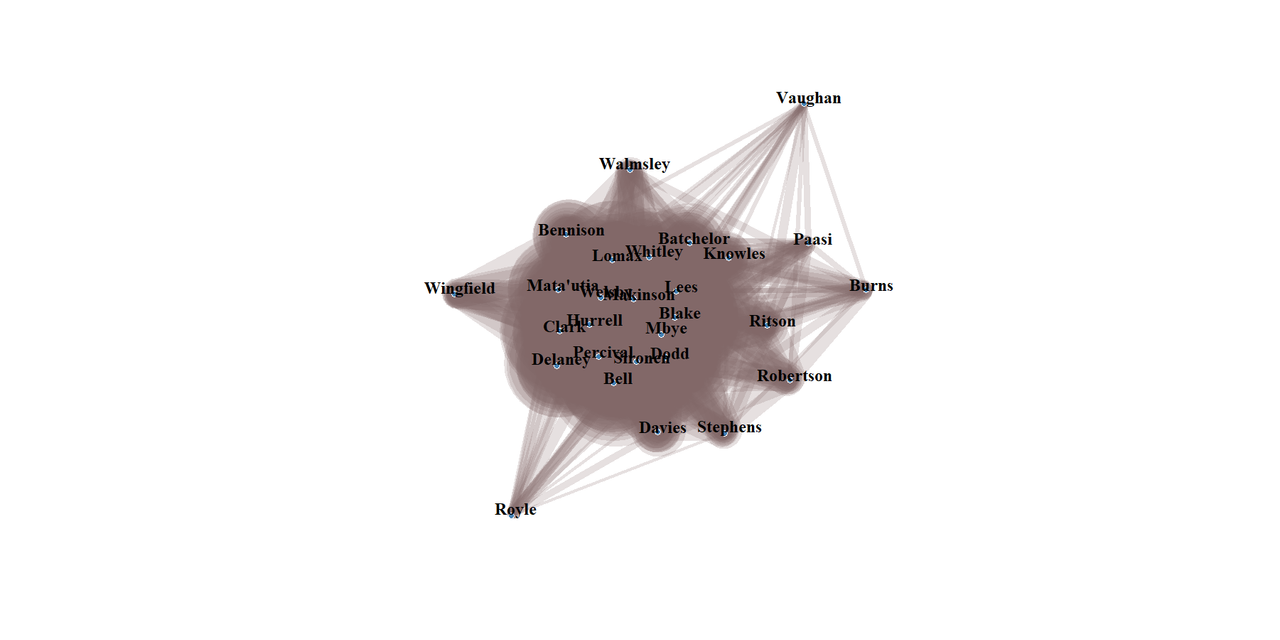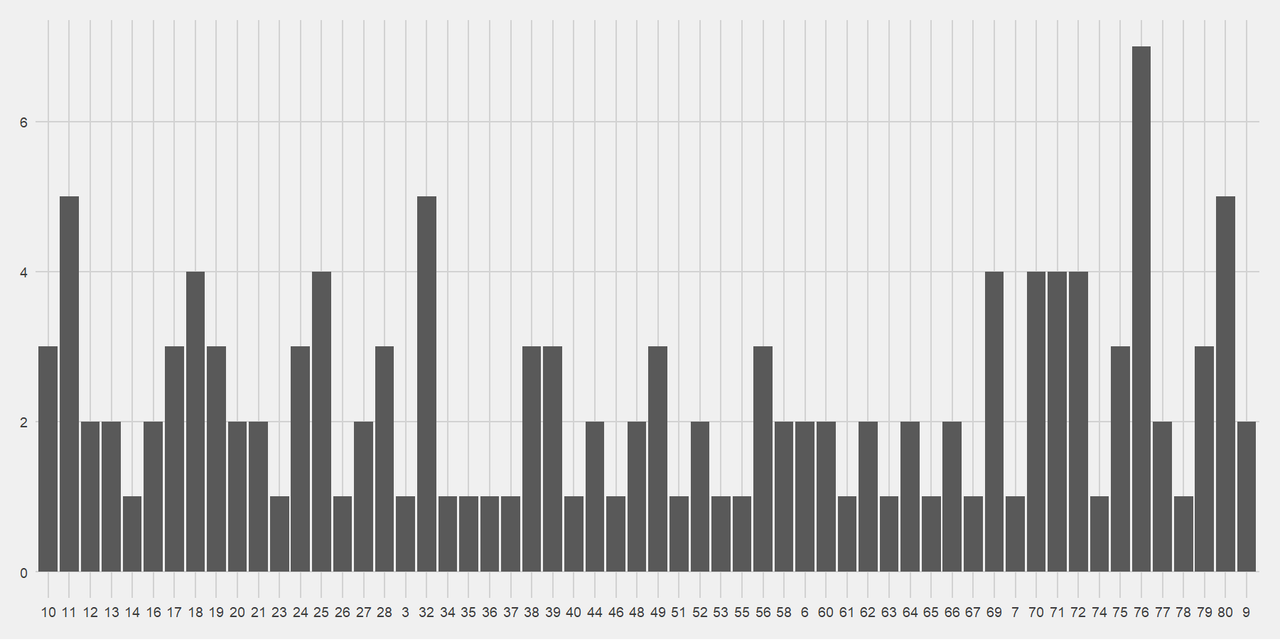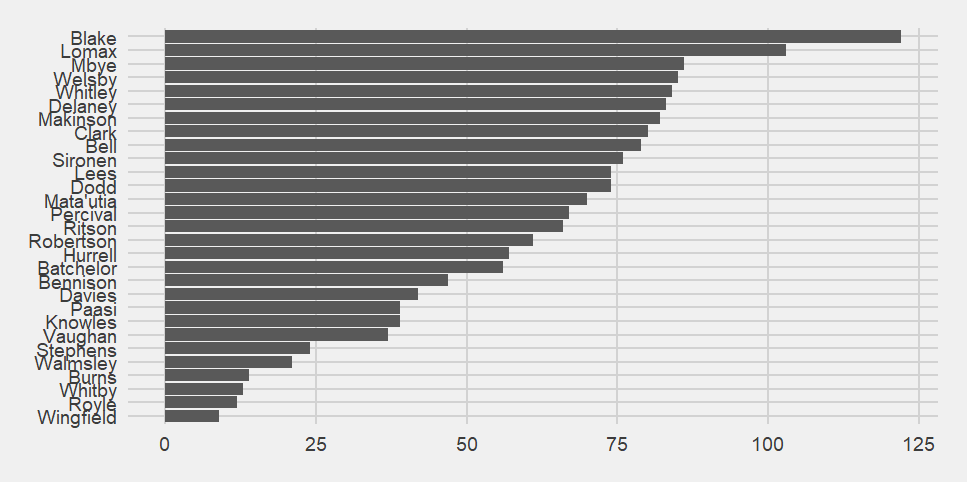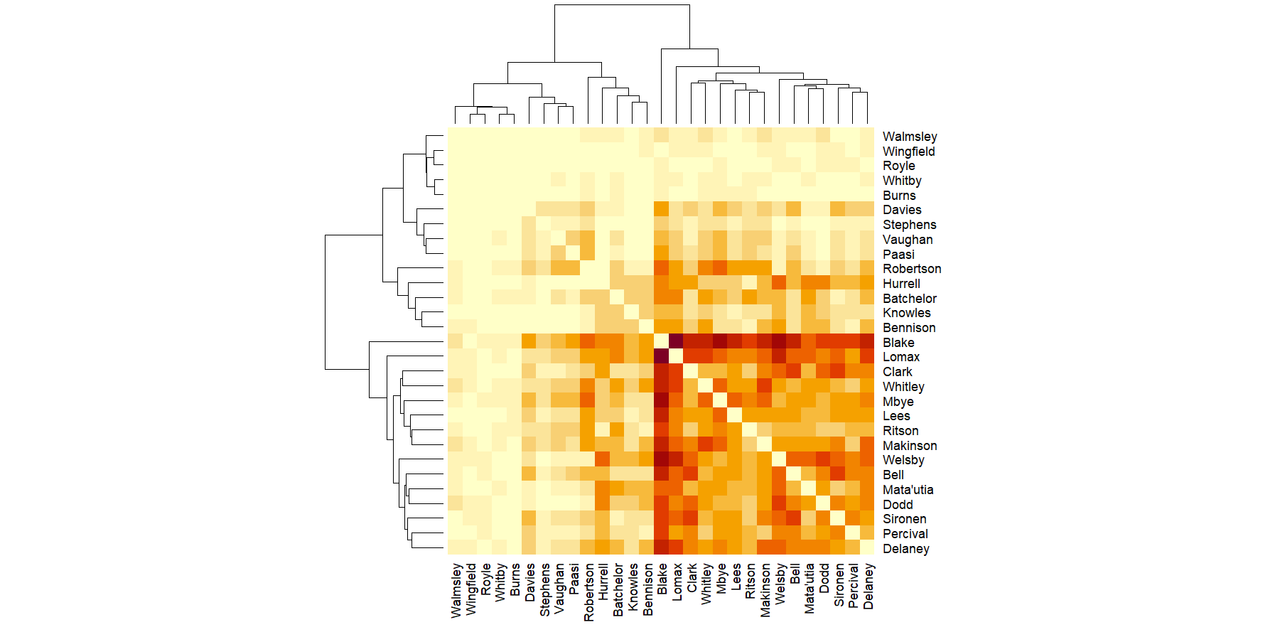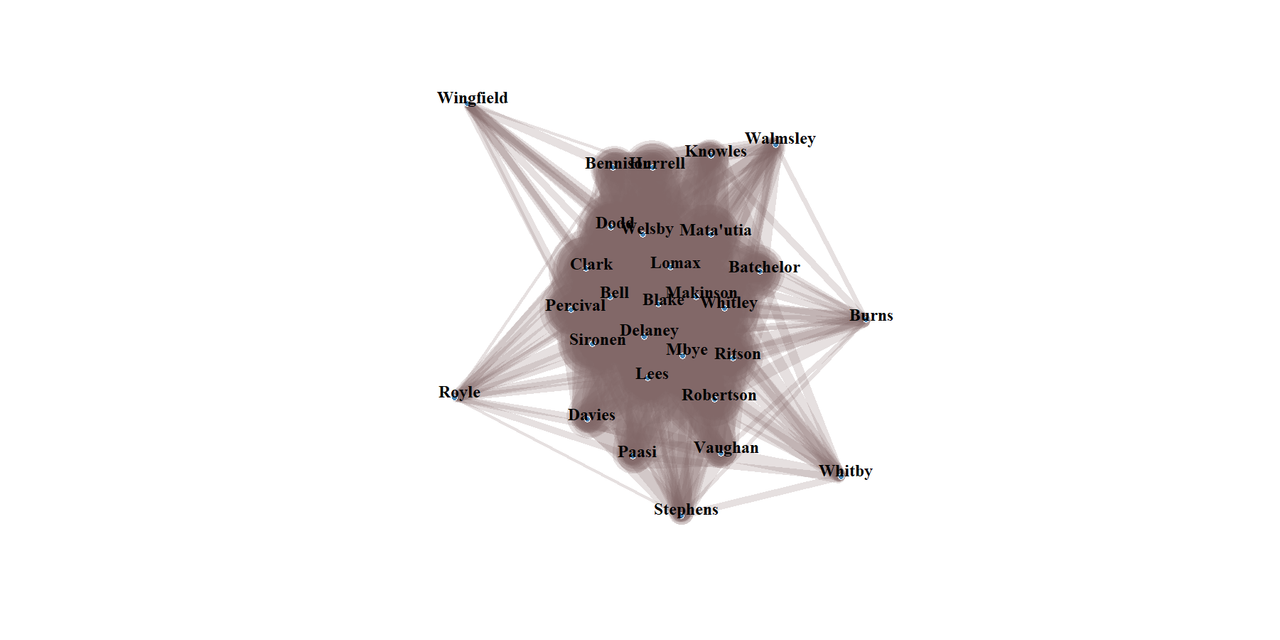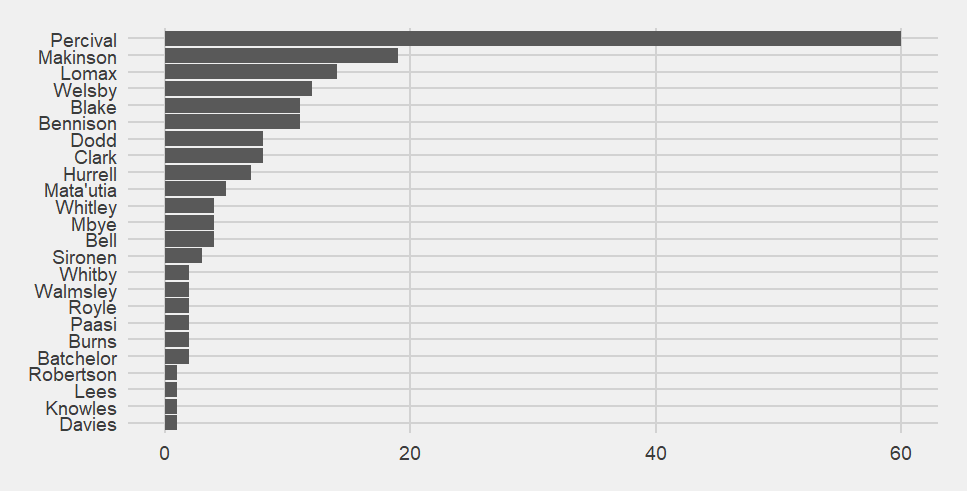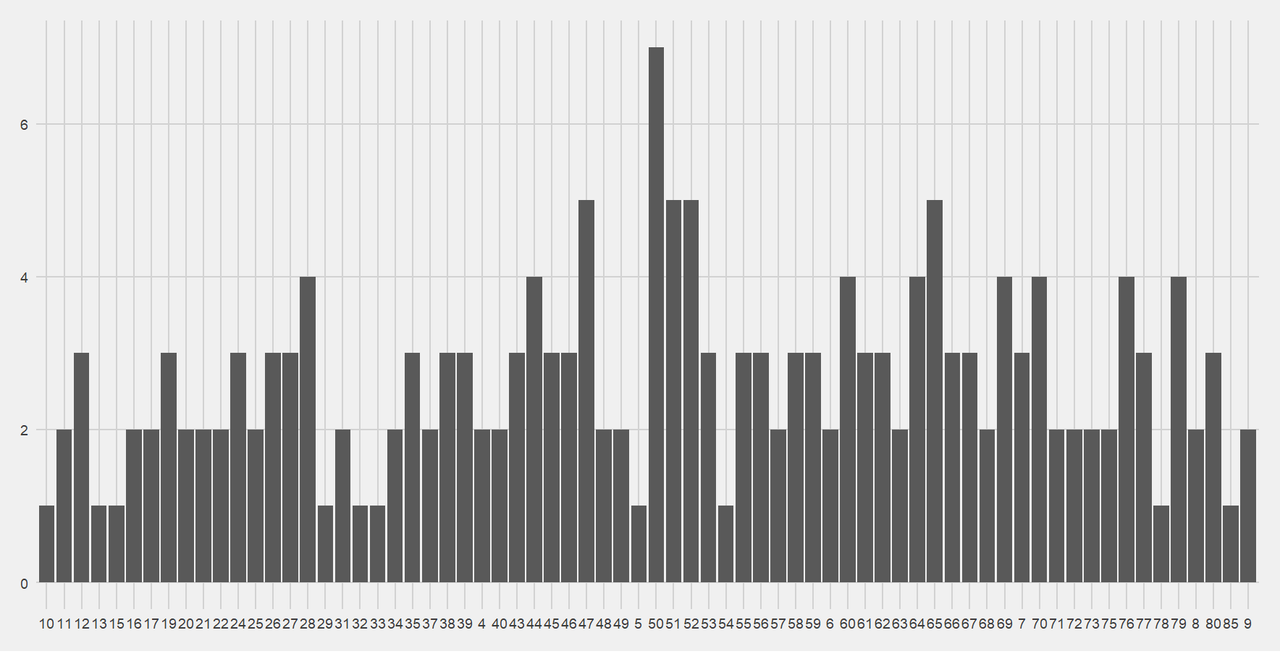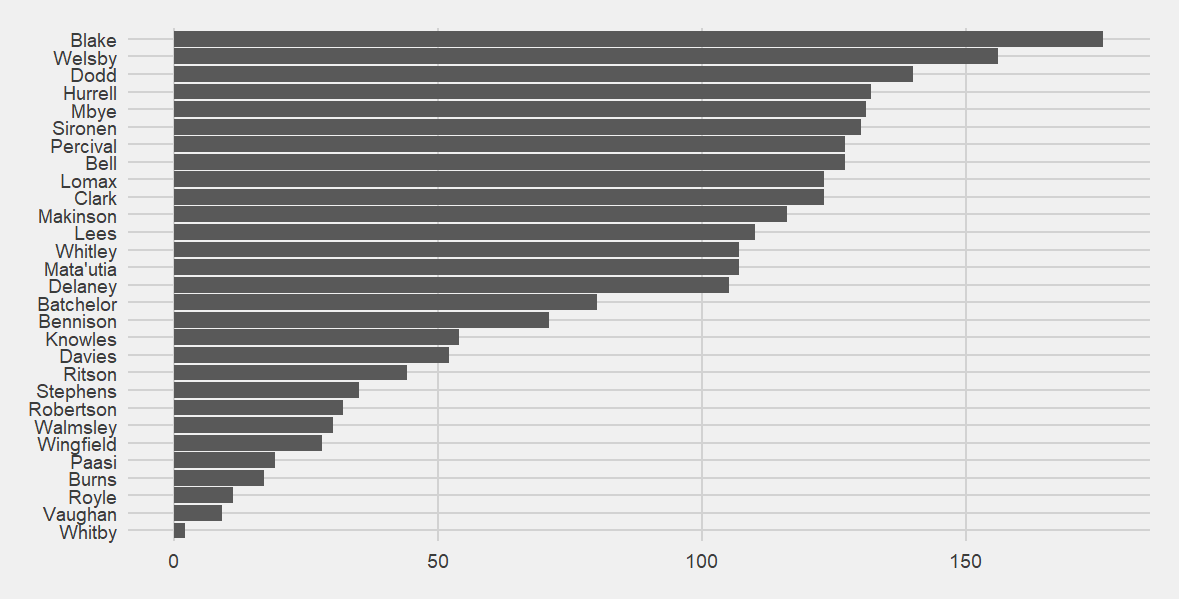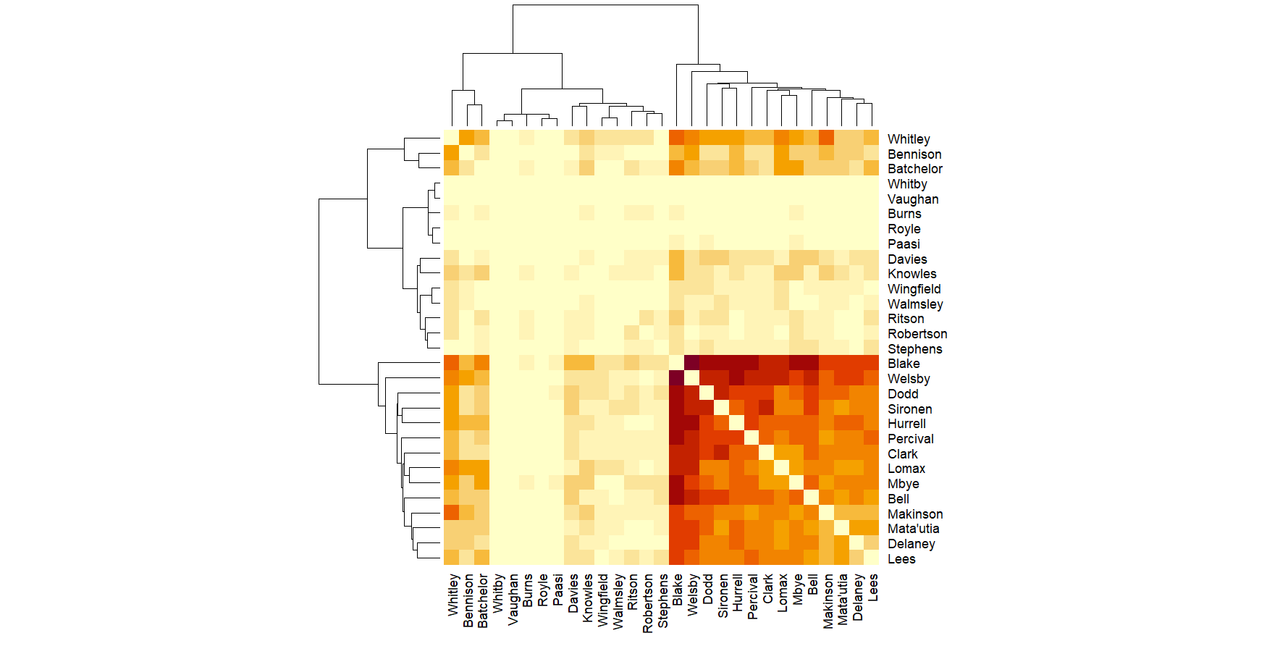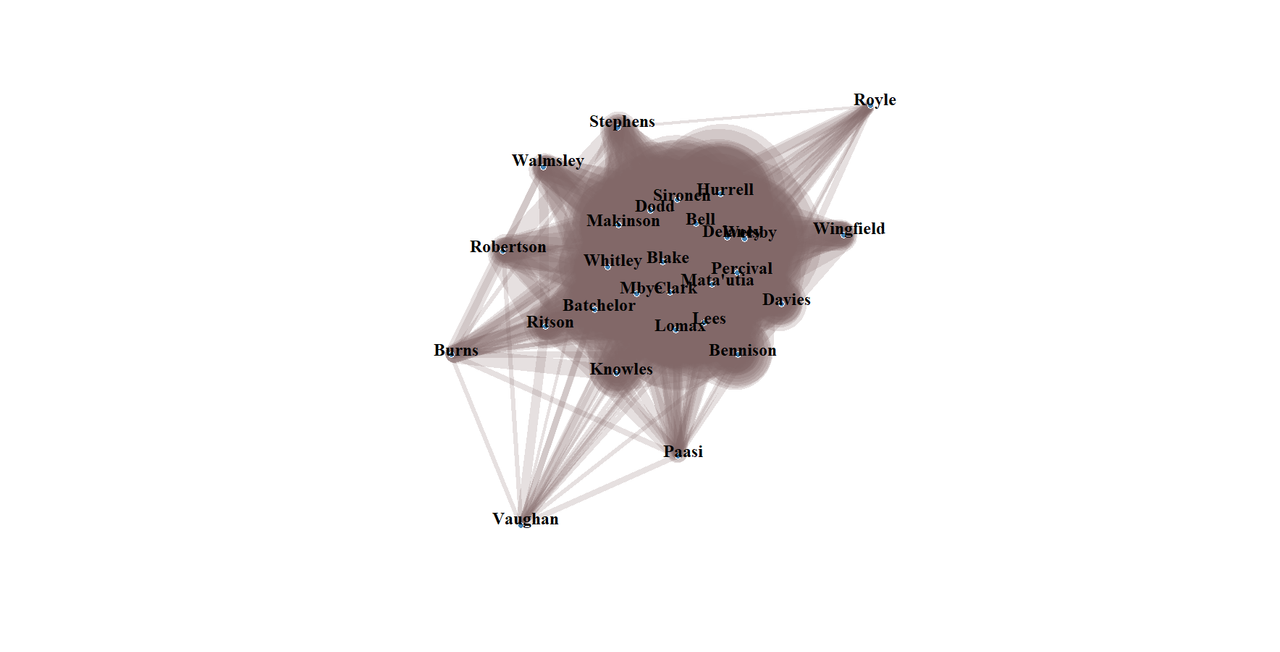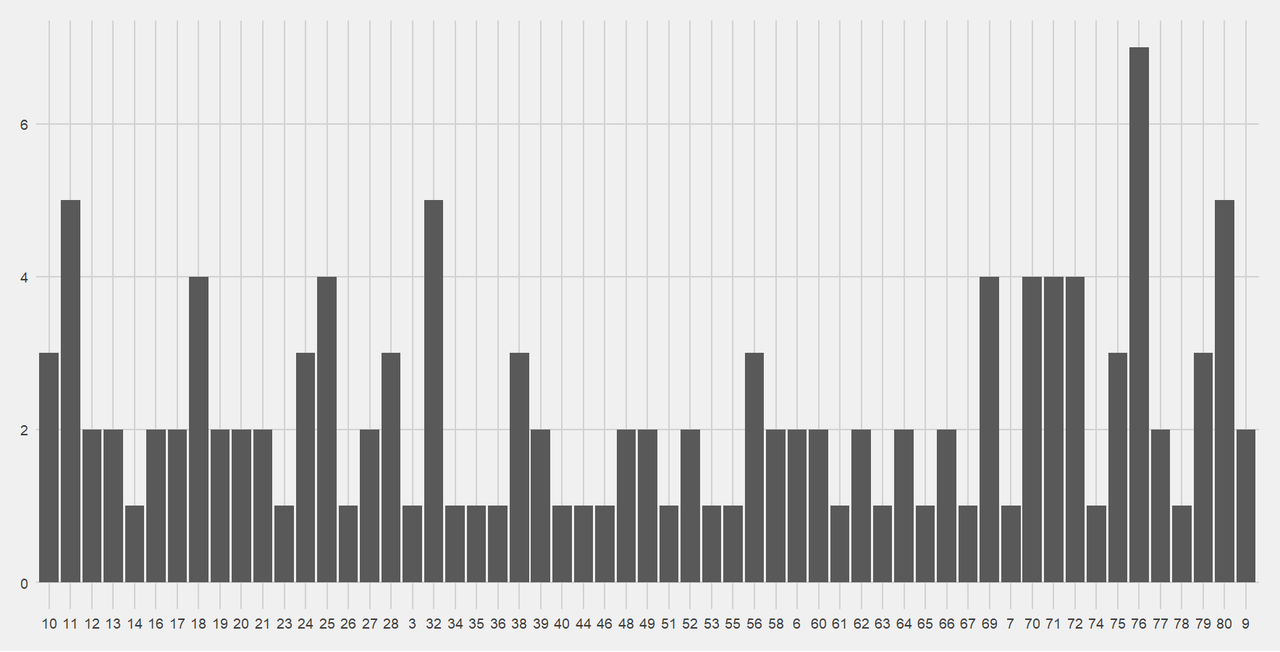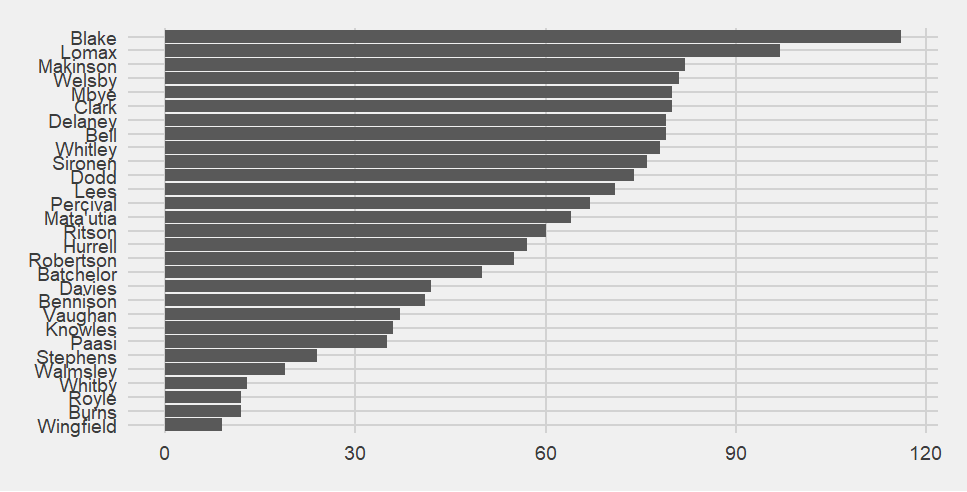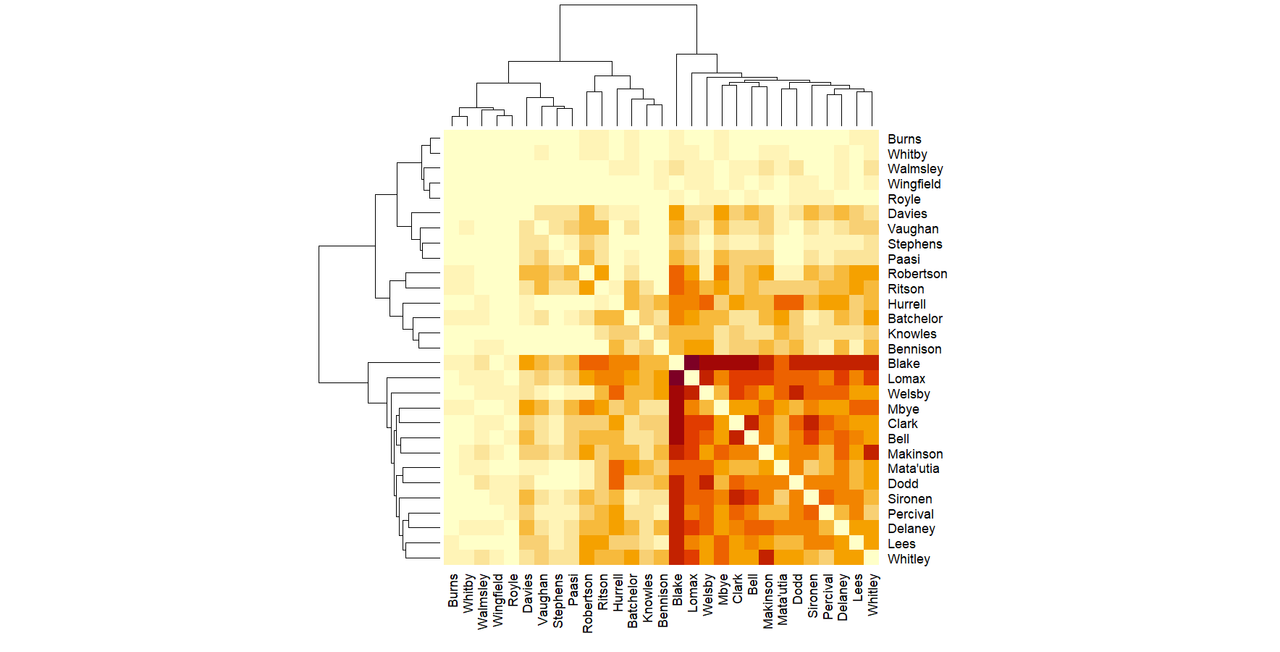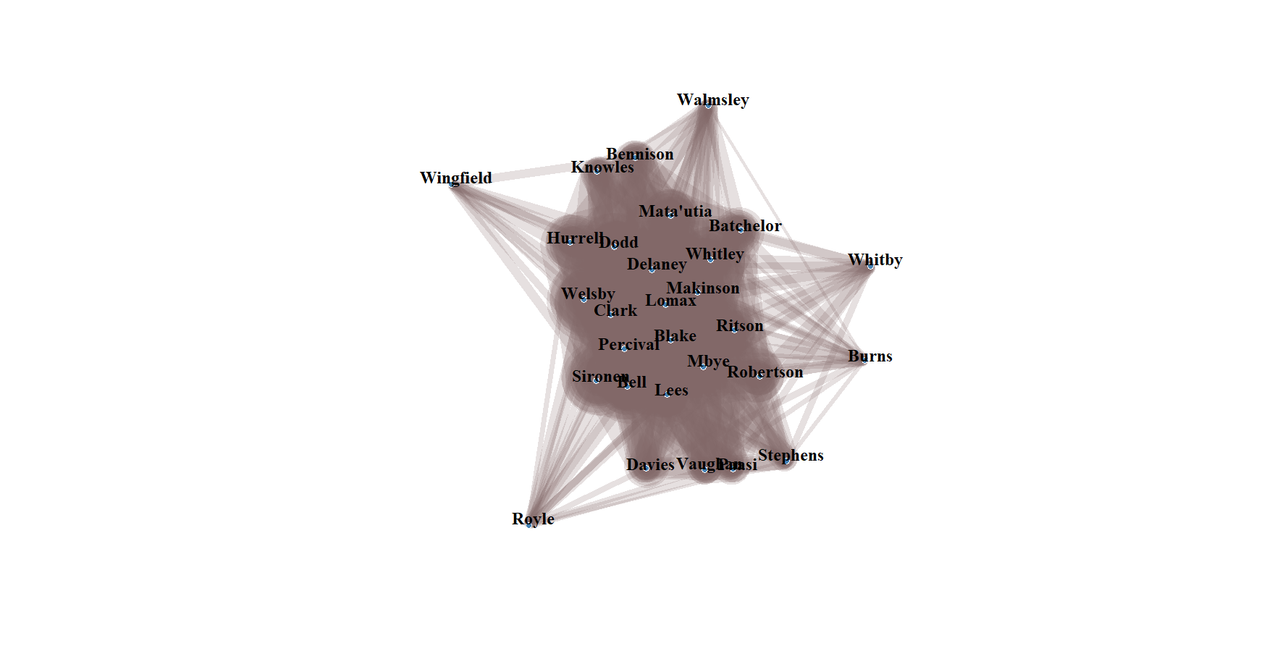Now in a slightly different format.
The Making Of:
UEFA saying teams had to announce their teams by the 25th of June meant that I have had plenty of time to make these diagrams. That the women's teams are limited to only 23 players also sped this along.
Interestingly, while coverage and interest in women's football had increased hugely, the Wikipedia pages are still updated much more slowly than the equivalent men's pages. I was making the diagrams and spotted that Italy had a much bigger and darker red circle than the other teams, and when I checked, it was because the Wikipedia page hadn't been updated following the cut from 27 players to 23.
The Diagrams:
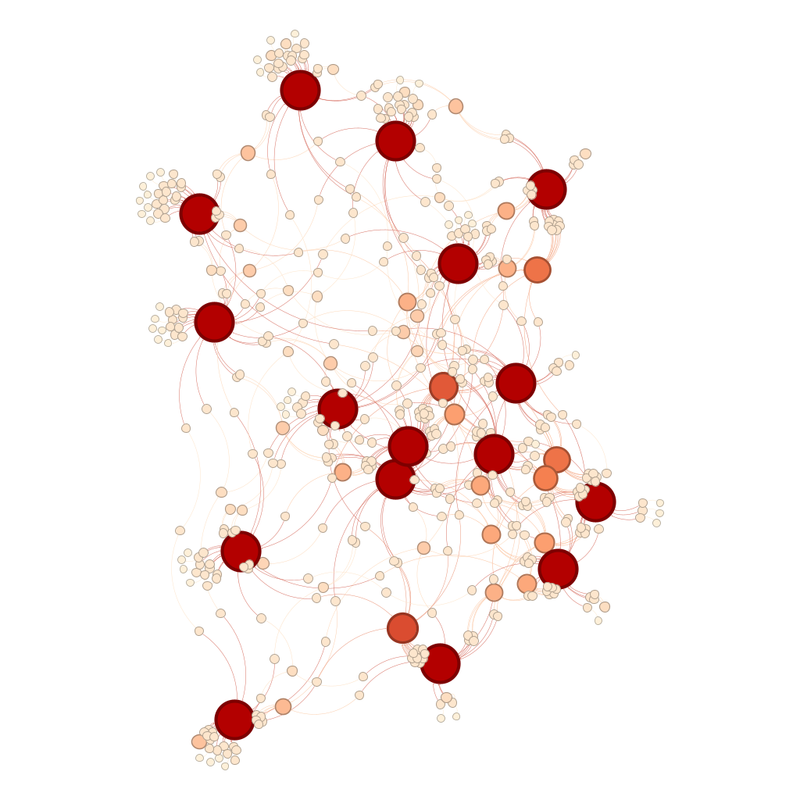
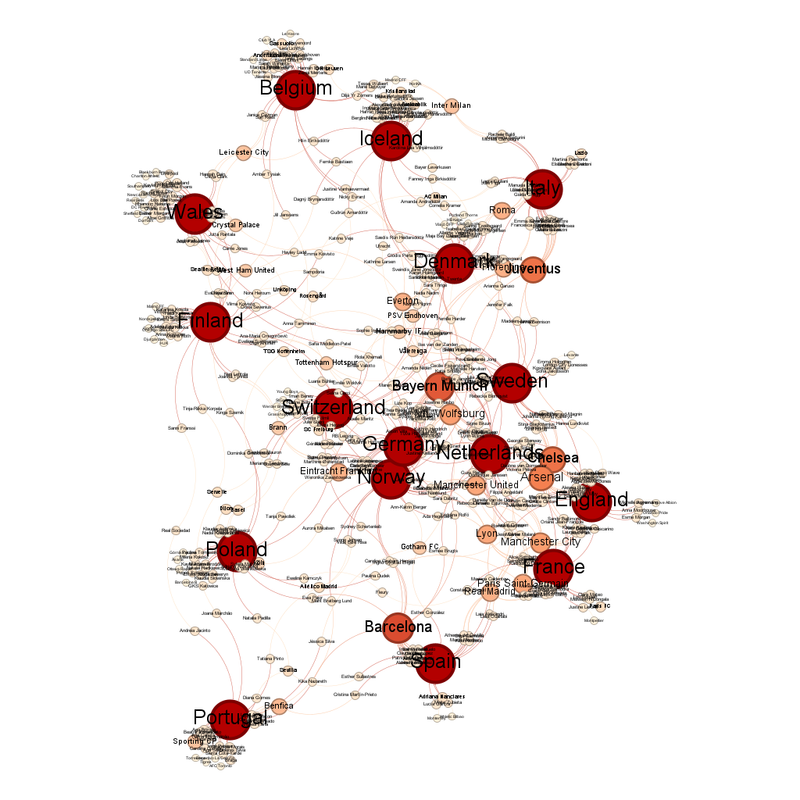
The community view is very pretty this year.
There are 14 communities covering the 16 teams.
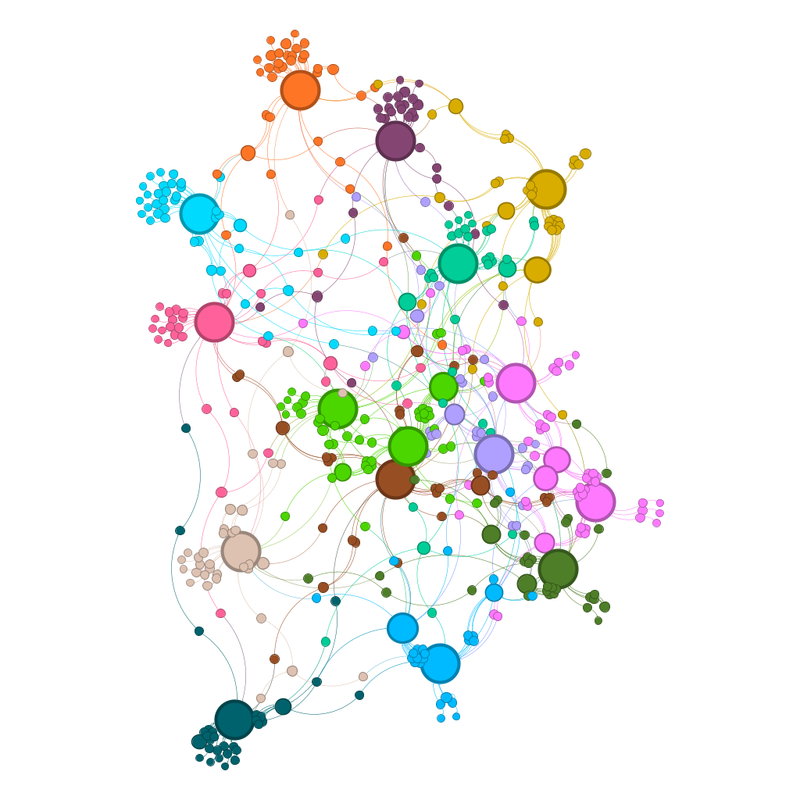
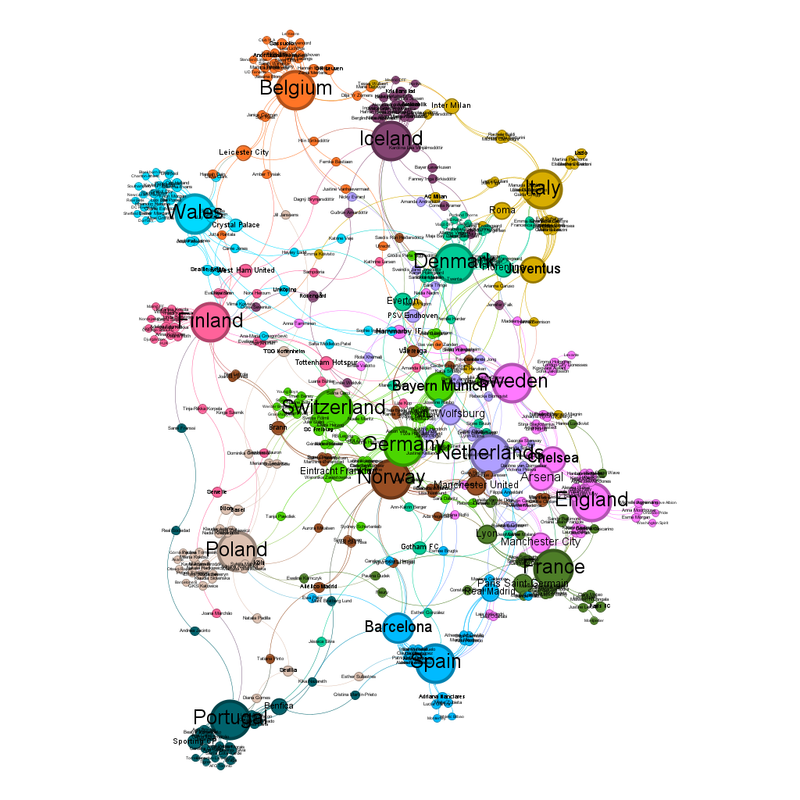
Some Observations Based on the Diagrams:
Every country has at least one player playing for their home league, except Wales.
Every country has at least one player playing abroad - for Italy it is literally only the one (Arianna Caruso for Bayern Munich).
It is not clear if Germany or Switzerland is the country closest to the centre.
It is clear that Bayern Munich are the club team closest to the centre.
The club teams with the most players present are Barcelona with 17, Bayern Munich with 16, then Juventus and Chelsea with 14.
For most national teams, the players are spread over several teams. The exceptions to this are Italy, Spain, Portugal and Germany, although with Germany it's less obvious when looking at the diagram because a number of non-German players also play for them. England are more weakly like that, with a lot of players from Chelsea, Arsenal and Manchester City.
The number of links between Italy and Denmark is due to the large number of Danish players playing in Italy, which might be related to similar patterns seen in the men's game. Danish acquaintance of mine used to complain players on had to be signed by Italian clubs to walk into the national team.
Having done this for women's tournaments before (see the 2022 version of this here -
https://fulltimesportsfan.wordpress.com/2022/07/08/womens-euro-2022-network-diagrams-group-stage/), I'm slightly saddened that we seem to be losing those teams where the main team is the women's team; there's no players for Turbine Potsdam for instance, and only a few from London Lionesses, Paris FC and Madrid CFF. I don't want the increased interest in women's football to cause it to lose its history. (I still don't forgive the English Women's Super League for screwing over Doncaster Belles.)
Some of the old divisions still remain; Liverpool not giving a flying curse about it's women's team is reflected by there only being two Liverpool players present, both for Wales, compared to eight for Everton. Everton have always supported their women's team - when I was young, the only chance women in my area had of playing football properly was in their women's team.
One thing that might be affecting the clustering is the number of players who play for US teams. A country with a lot of club teams represented but not present itself doesn't usually happen, unless one of the big guns doesn't qualify (looking at you, so often, Italy).
I will be keeping an eye on Poland, particularly Emilia Szymczak who is 19 and plays for Barcelona B. If you're good enough to be picked up by Barcelona at that age ...
In terms of the community view, the national teams that group together are Sweden and England (because of Arsenal and Chelsea) and Switzerland and Germany (because of Eintracht Frankfurt, Bayern Munich and Wolfsburg). Switzerland and Germany being joined is really interesting given Germany's circle overlaps with Norway's, and yet those two aren't linked.
Predictions:
L likes me to try to predict the outcome of the games from this, and there is some correlation between closeness to centre and connectedness and doing better in tournaments.
Because half the teams will be gone after the group stage, it's a lot harder to predict, and it makes the games so much more tense. Limiting the Euros to 16 teams also means some of those groups are stacked - like group D - England, France, Netherlands and Wales. So that's the present World Cup holders, the winners of Euro 2022, the winners of Euro 2017 and the lowest ranked team in the competition.
Bon chance, Wales.
(Actually, the diagram doesn't have them as separated from the other teams as I would have expected.)
Spain are the team that really confuses the diagram. I would expect them to be a lot more central, given I expect them to do well. It could be the number of players that also play for clubs with Portuguese players that is pulling them out there or potentially a sign that they may not do as well as expected.
Running purely off the diagram, the teams most closely clustered are Germany, Norway, Switzerland, Sweden, Netherlands, England, France, and then one of Denmark and Spain.
You'll notice that's 9 teams and only 8 go through.
If we take Switzerland and Norway from group A, that leaves 3 more groups where it is unclear.
For group B, it is unclear because only Spain are in that central core, and they're barely in it.
For group C, as Germany and Sweden are closer to the centre than Denmark, I will predict that these are the teams that will get through.
For group D, D for death, that logic can't work because England and France are a similar distance from the centre of the cluster. My best prediction - that group is going to be tight.
